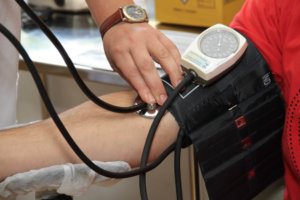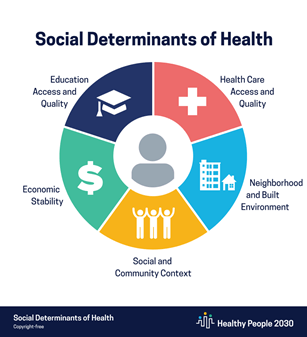Health Matters: Straighten up, your spine will thank you

At some point in our lives, a majority of us are likely to experience neck and back pain, including chronic muscle strains, persistent spinal malalignment, pinched nerves, bulging and herniated discs and muscular imbalances. Our spine is made up of 33 bones—leaving us with a lot of room for problems. Luckily a wide range of corrective strategies, which we can implement throughout our day, can help us manage these problems.
Envision a stressed-out employee working a desk to meet a deadline: head forward, shoulders rounded, spine hunched. Hopefully, after picturing that disgruntled employee, you’ve straightened up a bit in your seat.
That posture can cause a multitude of injuries that can result in chronic pain if not taken care of properly. Forward head and rounded shoulders can cause the muscles in the back of the neck to become overworked and significantly restricted, while the muscles in the front of the neck become overly lengthened and weak. Consequently, the chest muscles (pectorals) become tightened due to rounded shoulders, and the muscles of your upper back, your scapular stabilizers, become stretched out and weak. These muscular imbalances then make it even more difficult to maintain an upright posture.
Similar problems result from poor lower body posture. The muscles of the lower back tend to become overly tight, causing the abdominals to become deconditioned and weak. In addition, the hip flexors and quadriceps shorten, weakening the buttocks. This pattern of imbalance creates joint dysfunction in the lower back, sacroiliac joint and hip joints.
Nerve entrapment, or a “pinched nerve,” and disc herniation are other common injuries that may result from poor posture. Envision a jelly donut. Ideally the jelly stays neatly inside the donut. Now imagine the jelly gradually leaking out of the powdery exterior. This is similar to a herniated or bulging disk: some of the softer “jelly” pushes out through a tear in the tougher exterior. This may cause symptoms in the affected area as well as throughout the upper and lower extremities.
Chronic muscle strain through the neck and shoulder is commonly seen in people with postural deficits. Over time, this may result in trigger points which can be painful to the touch and restrict neck range of motion.
Finally, persistent spinal malalignment is a widespread culprit of neck and back pain. A prolonged slumped posture increases the curvature of the upper back, creating a hunchback appearance. In addition, a head-forward posture puts the lower part of the neck at risk for injury due to the persistent pull of gravity, which causes the vertebrae to gradually slide forward relative to one another. People who work at a desk the majority of the day are at a higher risk for these types of injuries.
The elements of good posture
Luckily for most of us, we can improve our posture and significantly reduce the risk of injury and pain by using a three-pronged approach of improved postural awareness, good ergonomics and targeted exercises.
Good posture decreases the forces that go through the muscles and joints and enables everything to work efficiently with minimal stress. Check your posture by standing against a wall with you head, shoulder blades and buttocks touching the wall and your heels approximately six inches from the baseboard. There should be less than two inches between your neck, the small of your back and the wall. If you are unable or have difficulty achieving this position, it is an indicator of poor posture and an area to work on.
Sitting posture and healthy ergonomics are extremely important if you sit at a desk or use a computer frequently. Ideally, your feet should rest flat on the floor with your hips and knees at 90 degrees. You may need to adjust the height of your seat or place a foot rest under your feet for proper alignment. Your shoulders should be relaxed with your elbows resting gently on the armrests and your wrists straight while using the keyboard. The optimal back rest angle is 100–110 degrees, and the ideal viewing height is to have your eyes level with an imaginary line across the screen, about two to three inches below the top of the monitor. Keep in mind everyone’s body is different and you may need to make individual adjustments depending in your environment.
Practice, practice, practice
You can perform a number of basic exercises at your desk to improve your posture. The first is called a chin tuck, which can be performed sitting, standing or lying down. Tuck your chin by slowly drawing your head back so that your ears line up with your shoulders, essentially trying to make a double chin. Avoid looking up or down and keep your eyes straight ahead while performing this exercise.
The second is the shoulder blade squeeze with rolls. Pinch your shoulder blades in toward one another, hold the squeeze, then slowly roll your shoulders forward, then backward.
The third exercise, the “snow angel,” is meant to improve flexibility of your upper body. Take a wide stance and slowly move your arms up and down like you are making a snow angel (bringing arms out to the side, and up, overhead) allowing the weight of the arms to provide a stretch to the front of the chest. You may also slightly arch your back to feel a stretch in the hip flexors. Do not perform any exercise if it becomes painful.
Each of these exercises can be performed throughout your day in repetitions of 10 or as tolerated.
Keep in mind most people are required to be in positions at some point throughout their day that are less than ideal for our spines. The techniques discussed above are meant to aid in reversing some of the effects our occupations and daily activities may cause. If you follow these practices and continue to feel discomfort related to specific activities, visit your doctor of physical therapy for a postural evaluation and more detailed instructions.
Katie Spencer is a doctor of physical therapy and orthopedic certified specialist. She works at Dee Physical Therapy in Shelburne. You can reach her with comments and questions by email. For more information about Dee Physical Therapy visit their website.
Related Stories
Popular Stories
If you enjoy The Charlotte News, please consider making a donation. Your gift will help us produce more stories like this. The majority of our budget comes from charitable contributions. Your gift helps sustain The Charlotte News, keeping it a free service for everyone in town. Thank you.
Andrew Zehner, Board Chair








